Homemade dimmers. Part three. How to control a thyristor?
 How to turn on the thyristor? Turn on the thyristor with direct current.
How to turn on the thyristor? Turn on the thyristor with direct current.
To answer this question you will have to assemble a simple schematic shown in the figure. 1. After the circuit is assembled, it should be connected to a constant voltage source.
The variable resistor R2 motor should be set to the lower position in the diagram. Then, while holding down the SB1 button, (the light should not still be on), slowly move the slider upwards in the diagram.
In some position of the engine, the lamp will light up, after which the button should be released, thereby removing the signal from the UE. After releasing the button, the light should remain on. How can all this be explained? By rotating the resistor R2 engine, we increased the current ...
Homemade dimmers. Part two. Thyristor device
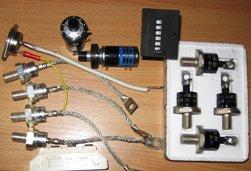 After the device and the use of the dynistor have been considered, it will be easier to understand the device and the operation of the trinistor. However, most often the trinistor is simply called a thyristor, somehow more familiar.
After the device and the use of the dynistor have been considered, it will be easier to understand the device and the operation of the trinistor. However, most often the trinistor is simply called a thyristor, somehow more familiar.
The device triode thyristor (trinistor) shown in the figure. In the figure, everything is shown in sufficient detail and in general, with the exception of another case, it resembles a dinistor device. The connection diagram of the load and the battery is the same as that of the dinistor.
In both cases, the power source is conventionally shown as a battery in order to see the polarity of the connection. The only new element in this figure is the UE control electrode connected, as already mentioned, to one of the regions of the “layered” semiconductor crystal ...
Homemade dimmers. Part one. Types of Thyristors
 The article describes the use of thyristors, provides simple and illustrative experiments to study the principles of their operation. Practical instructions for checking and selecting thyristors are also given.
The article describes the use of thyristors, provides simple and illustrative experiments to study the principles of their operation. Practical instructions for checking and selecting thyristors are also given.
The articles “Dimmers: device, varieties and connection methods” and “Device and circuit of a dimmer” described the use of industrial dimmers. But, despite the variety and availability of such devices on sale, sometimes still, you have to remember the forgotten old, and assemble the dimmer according to a fairly simple amateur scheme.
The power of the device that is on sale may be insufficient, or there are simply parts so that they are not stupidly lost, so let there be at least something. In addition, the dimmer does not have to regulate the light at all ...
How to make a power supply from an electronic transformer
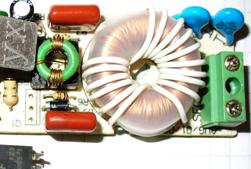 After all that has been said in the previous article, it seems that making a switching power supply from an electronic transformer is quite simple: put on the output a rectifier bridge, a smoothing capacitor, if necessary a voltage regulator and connect the load. However, this is not quite true.
After all that has been said in the previous article, it seems that making a switching power supply from an electronic transformer is quite simple: put on the output a rectifier bridge, a smoothing capacitor, if necessary a voltage regulator and connect the load. However, this is not quite true.
The fact is that the converter does not start without load or the load is not sufficient: if you connect an LED to the rectifier output, of course, with a limiting resistor, you will be able to see only one flash of the LED when it is turned on.
To see another flash, you will need to turn off and on the converter to the network. In order for the flash to turn into a constant glow, an additional load must be connected to the rectifier ...
How is an electronic transformer
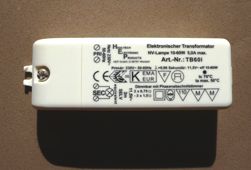 Externally, the electronic transformer is a small metal, usually aluminum case, the halves of which are fastened with just two rivets. However, some companies produce similar devices in plastic cases.
Externally, the electronic transformer is a small metal, usually aluminum case, the halves of which are fastened with just two rivets. However, some companies produce similar devices in plastic cases.
To see what is inside, these rivets can simply be drilled.The same operation will have to be done if an alteration or repair of the device itself is planned. Although at its low price it is much easier to go and buy something else than to repair the old.
The circuit diagram for the device is not attached, as well as for all current electronic devices. But the scheme is quite simplecontains a small number of parts and therefore the circuit diagram of an electronic transformer can be copied from a printed circuit board ...
How to power a cordless screwdriver from an electrical network
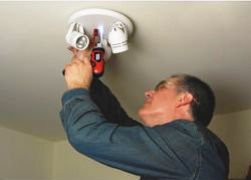 The cordless screwdriver is lightweight, small in size, does not require a network connection, which allows you to work with it in any conditions. But the trouble is that the battery capacity is small, and after 30 to 40 minutes of intensive work, you have to put the battery on charge for at least 3 to 4 hours.
The cordless screwdriver is lightweight, small in size, does not require a network connection, which allows you to work with it in any conditions. But the trouble is that the battery capacity is small, and after 30 to 40 minutes of intensive work, you have to put the battery on charge for at least 3 to 4 hours.
In addition, batteries tend to become unusable, especially when they do not use a screwdriver regularly: they hang a carpet, curtains, paintings and put it in a box. After a year, they decided to screw on a plastic baseboard, and the screwdriver does not “pull”, charging the battery helps a little.
A new battery is expensive, and not always on sale you can immediately find exactly what you need. In either case, there is only one way out - to power the screwdriver from the mains through the power supply ...
Automatic lighting switches with infrared and acoustic sensors
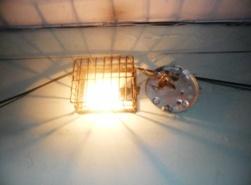 The modern elemental base of electronics allows you to create devices simple in circuitry, but having a fairly wide range of functions. Previously, such devices were only available for use in complex and expensive professional systems, and now their use makes our everyday life more comfortable and easier.
The modern elemental base of electronics allows you to create devices simple in circuitry, but having a fairly wide range of functions. Previously, such devices were only available for use in complex and expensive professional systems, and now their use makes our everyday life more comfortable and easier.
This article will talk about devices that use sensors that respond to infrared radiation. Once such sensors were mainly used in security systems, and now no one is surprised by the doors that open in front of each incoming person or the automatic inclusion of lighting in the entrance. And all these are infrared sensors! ...
 The corridor switch is very familiar to older electricians. Now such a device is somewhat forgotten, so you have to briefly talk about the algorithm of its action.
The corridor switch is very familiar to older electricians. Now such a device is somewhat forgotten, so you have to briefly talk about the algorithm of its action.
Imagine that you leave a room in a corridor in which there are no windows. Click the switch near the door, and the light in the corridor lights up. This switch is conventionally called the first.
Having reached the opposite end of the corridor, before exiting to the street, you turn off the lights by the second switch located near the exit door. If someone else remains in the room, then he can also turn on the light with the first switch when exiting, and turn off with the help of the second. When you enter the corridor from the street, the light turns on with the second switch, and already in the room turns off the first ...
